Silver spider: a biting spider that lives in water (10 photos)
The silver spider is a spider that has adapted perfectly to an aquatic lifestyle. It weaves cocoons from a web filled with air. 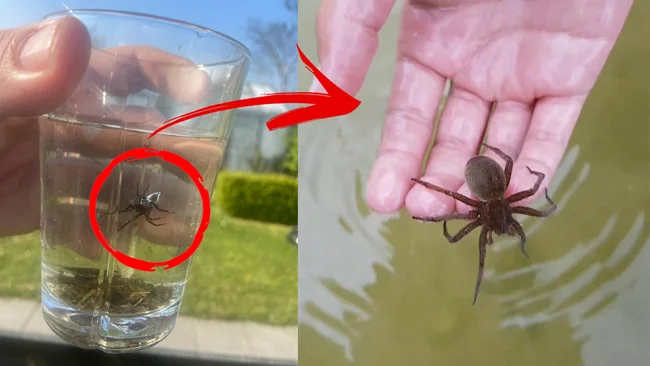
The silver spider, water spider, or diver - on land it is easy to confuse it with thousands of other arthropods. It is small: adult males grow only up to 1.5 centimeters, and females are even smaller - 1.2 centimeters. They are all brown-brown, without any signs of an "aquatic animal" - no webbing between the legs, no scales, no tail. A spider like any other. Scary. But you won't just meet one on land! Silverfish spend most of their lives underwater: hunting, breeding, sleeping. And waiting for you. 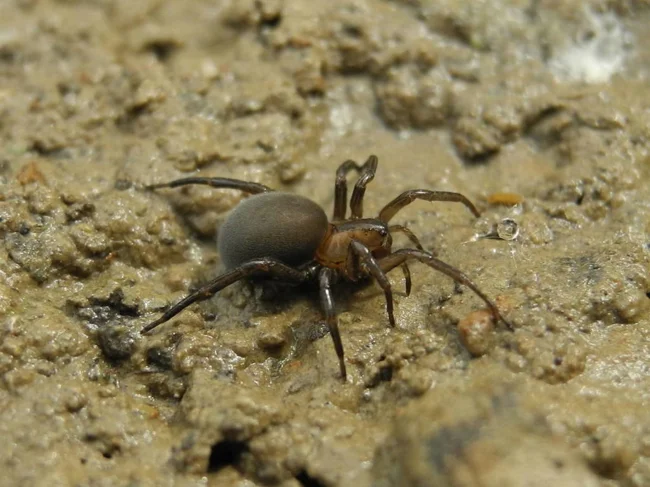
What are you shouting about? I just went out to sunbathe!
You can meet a silverfish in Eurasia as a whole, with the exception of very hot and very cold regions. While swimming or when you're fishing. All that eight-legged divers need to live is water. A small puddle thickly overgrown with algae or a large beautiful lake will do. And here a logical question arises: if the spider does not have any anatomical adaptations for life in water, then how is this even possible? 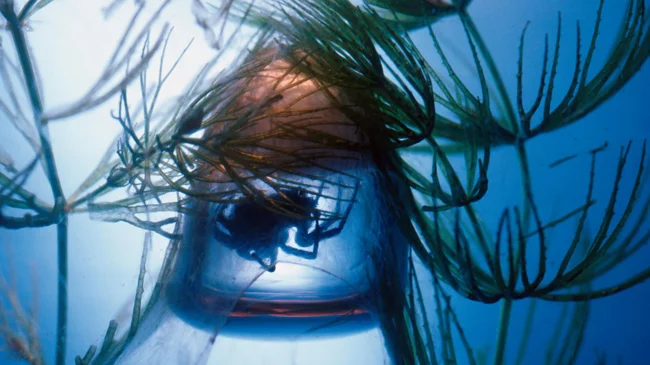
It looks like a frame from a science fiction film. But this is an ordinary Samara pond!
Yes, spiders do not have gills. But they know physics very well! Trick number one: the entire body of the spider is covered with thick long hairs, which, in turn, are covered with a greasy secretion of special glands. This secretion itself repels water, and due to the fact that the hairs are very thick, it turns out not just a “waterproof shell”, but a wetsuit. 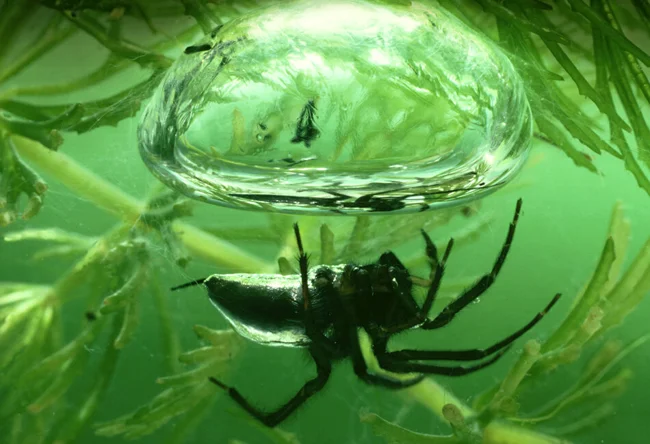
Don’t be surprised that the spider has an air supply on its abdomen. Where our anus is, arachnids have respiratory organs!
The hairs retain a supply of air bubbles, which the spider breathes underwater. Because of this, it looks silver - this is how light is refracted on the bubbles. Thanks to its natural wetsuit, the spider literally glides through the water. It can’t swim, but it can quickly walk along the bottom and cling to aquatic plants - that’s fine. 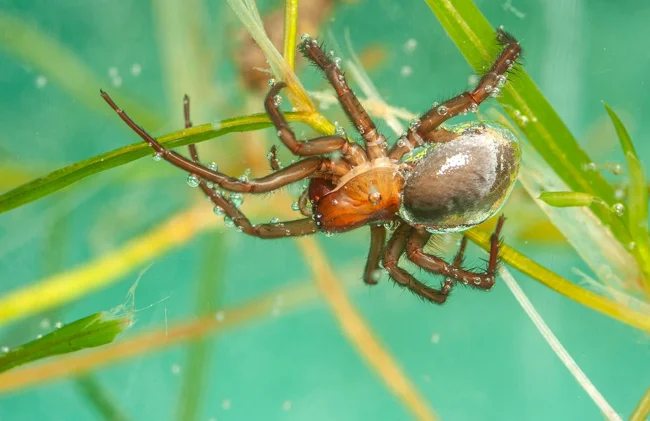
You get a carbonated spider.
Trick number two: an underwater base! Silverfish have learned to weave special web traps. But not for insects, but for... oxygen! First, the spider builds a bell-shaped dome underwater from the finest threads of web. Then it brings air bubbles from the surface - it simply clings to itself. Thus, the dome gradually fills with atmospheric air and serves as a base for the arthropod! 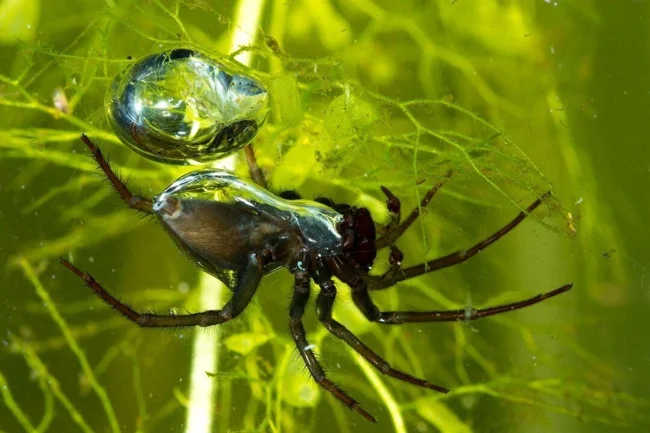
Someone builds sand castles. And the silverfish builds palaces out of thin air!
And here physics begins: the diver breathes, the oxygen concentration in the dome decreases. But there is oxygen in the water around him too! It “presses” on the walls of the dome and gradually penetrates inside. But the water does not — the web does not let such large and wet molecules through. The same with carbon dioxide: as the spider breathes, its concentration increases, and it presses outward, seeps out and dissolves in the water. Thanks to such a unique external “gill”, the silverfish spends its entire life underwater, only occasionally surfacing for a new portion of oxygen for its underwater home. 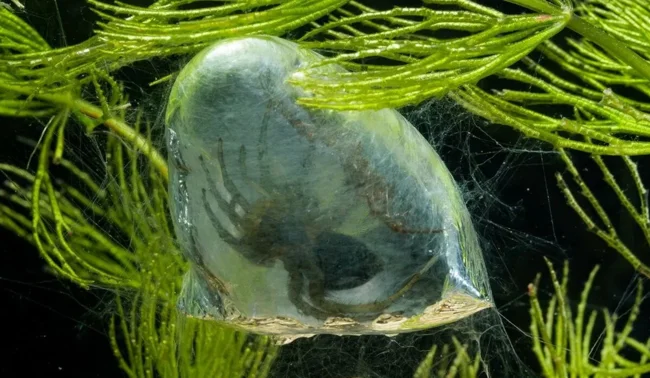
A rustic Kinder Surprise.
In its shelter, the spider not only rests, but also hunts. To do this, it is enough to stick its paws out of the dome. The insidious hunter waits until the prey swimming by creates a wave. Thanks to the hairs on its body, the silverfish feels the smallest vibrations! As soon as the silverfish has spotted the prey, it jumps out of the dome, grabs the victim, paralyzes it with poison and drags it back into the dome. This could be a fish, a small crustacean, a tadpole, someone's larva or... a leg. 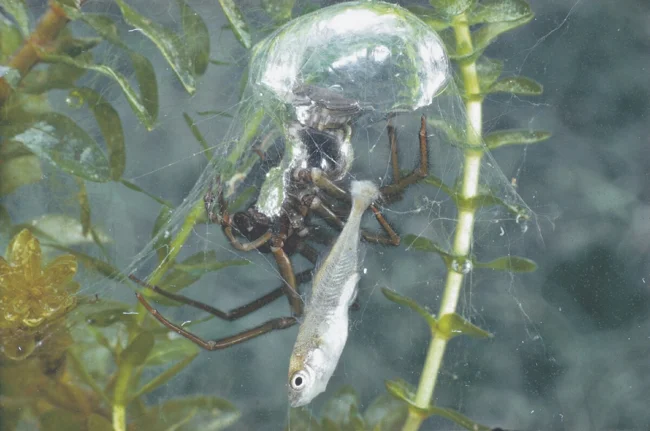
He's bringing his loot home, he probably has an interesting movie ready and some chips there.
Yes, a silverfish can attack a person. But you shouldn't chase an unfortunate spider around a pond and slap it. Firstly, such a bite is not dangerous for a person. If you are not a baby and you do not have a severe allergy to all living things, then there is nothing to be afraid of. Perhaps it will just be unpleasant - nothing more. Secondly, a silverfish will not chase you around the lake just to bite - it does not need that. It attacks only in self-defense, so the first word is yours. Do not pick up the spider and do not destroy its dome - then there is nothing to be afraid of. 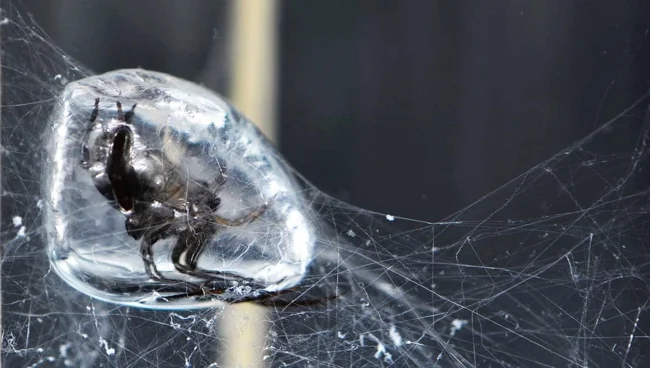
It is better not to pop such balls!
By the way, sometimes there can be not one spider in the dome, but as many as 160! This means you have found a brood chamber - the female specially builds a separate cradle for the eggs. After hatching, the young will live next to the mother, and sometimes the father, for another 3-4 weeks. Silver spiders, unlike other spiders, often settle in pairs - and no one eats anyone else. But when the spiderlings grow up, a spirit of adventure and a craving for everything new will ignite in them. Some will go out on land in search of a new body of water, others will rise to the surface of the water and release a long web-sail. The wind will pick them up and carry them far, far away. If you're lucky - to a new lake. 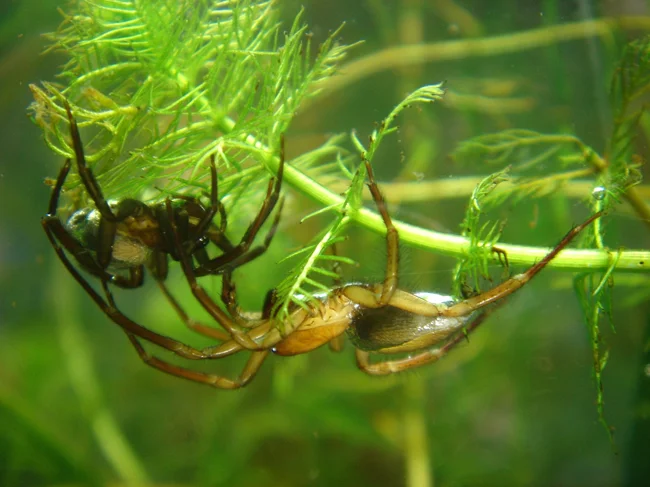
Usually among spiders, males are always smaller than females. But silverfish are an exception. Scientists suggest that this difference in size prevents cannibalism: when the female eats the male.
The moral of the story is this: yes, silverfish look like a real nightmare for an arachnophobe. But look at them from the other side, and you will see a genius creation, a real engineer of nature, who mastered a new ecosystem, having in reserve only a skein of web.























